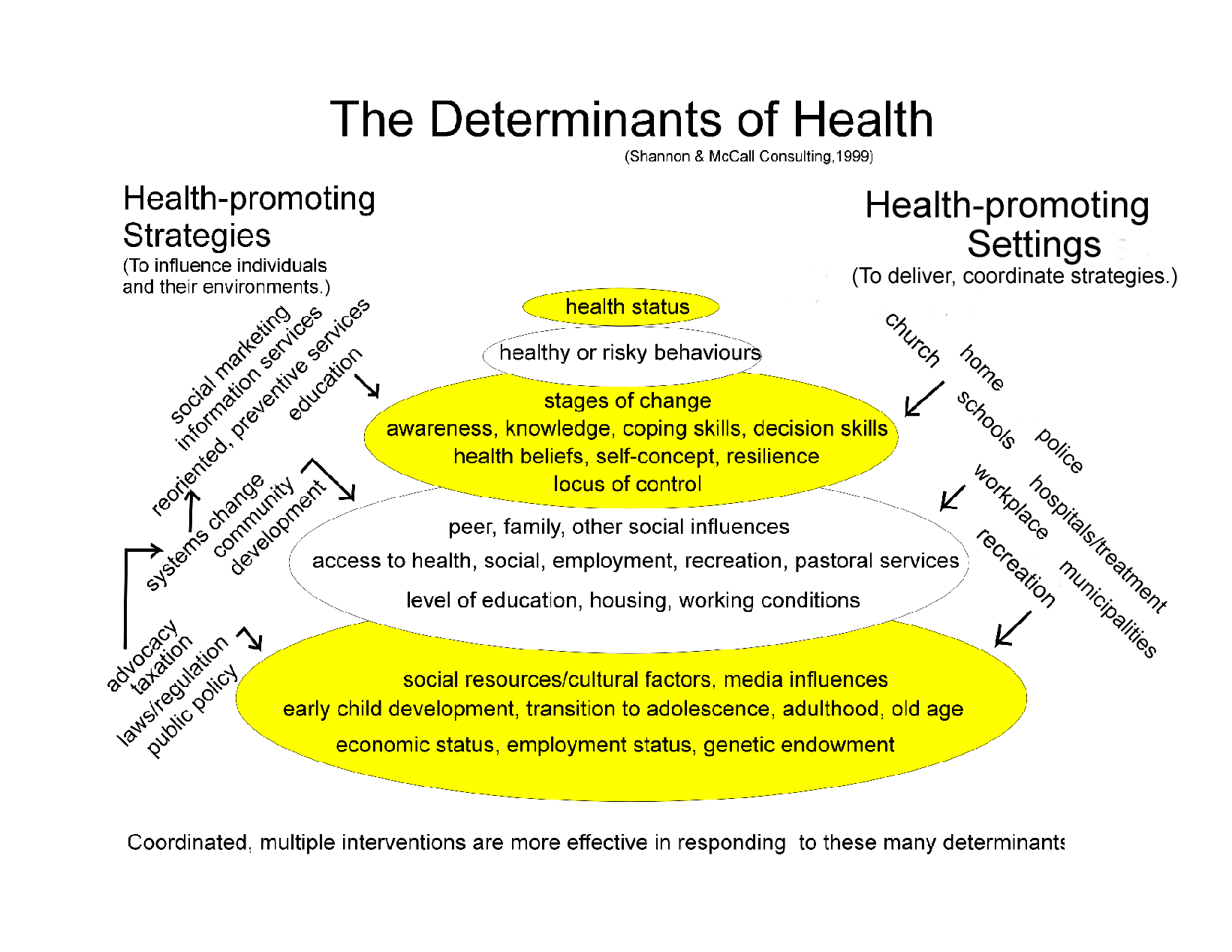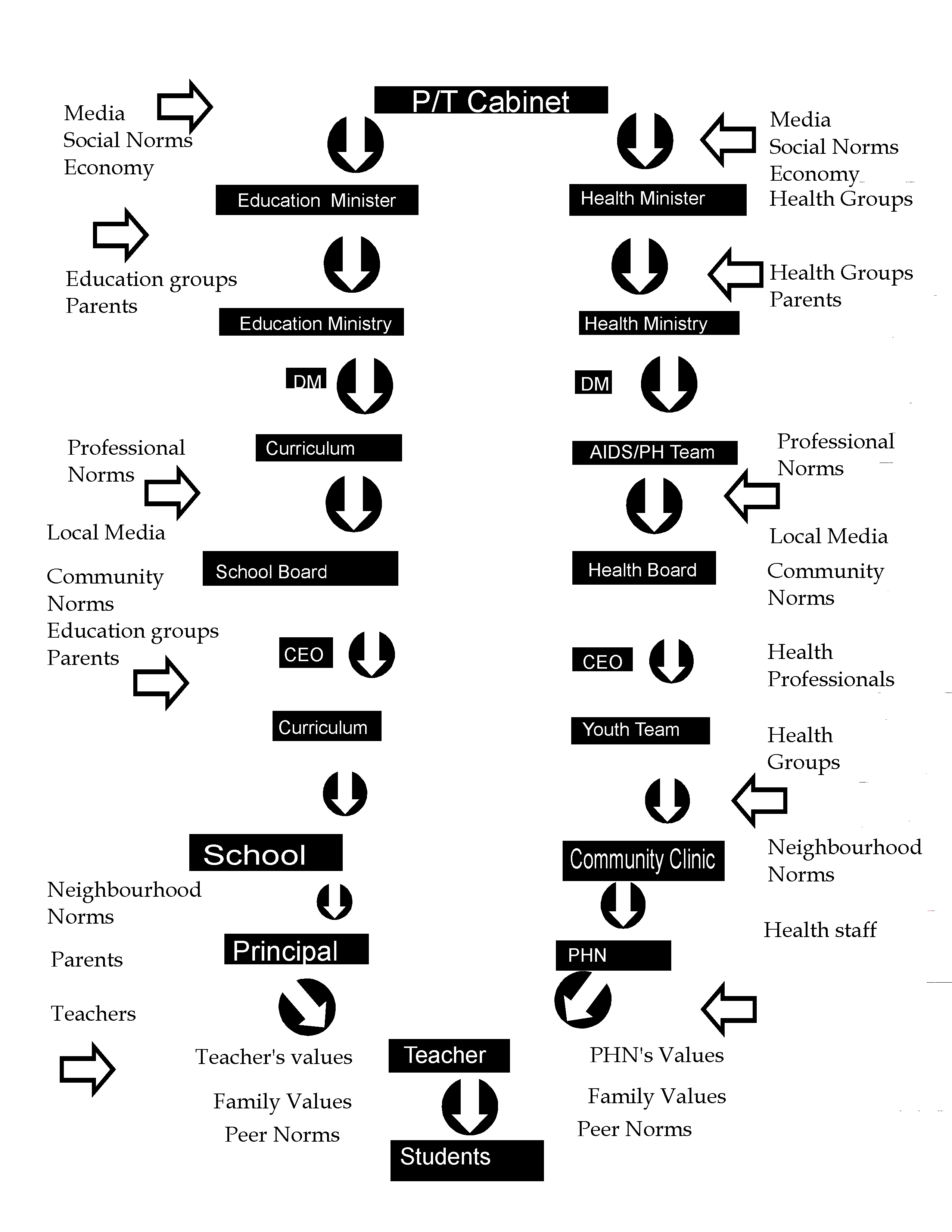
This introduction to the study presents the purposes, the conceptual basis and design and the research-based rationale for the study.
The purpose of this study is to report on the status of the policies, programs and practices of health and education ministries, school districts, public health units, school principals, public health nurses and teachers to prevent HIV and sexually transmitted diseases and to promote sexual health. The quantitative data from telephone interviews and questionnaires is correlated with qualitative data from focus groups with students and parents.
The research questions are:
What policies, programs and services are in place to support HIV prevention and sexual health promotion for students in Grade 7-11 within a) education ministries and b) health ministries?
What policies, programs and services are in place to support HIV prevention and sexual health promotion for students in Grade 7-11 in a) school districts, b) public health units and c) schools?
What HIV prevention and sexual health programs and services are offered by a) teachers and b) public health nurses?
What are the perceptions of selected a) students and b) parents towards the HIV prevention and sexual health programs and services with which they are acquainted?
Conceptual Bases for the Study
The conceptual basis of this study is derived from a population health/health determinants approach to health promotion (Health Canada, 1996). This approach recognizes that there are a variety of influences on health status. These determinants include:
The diagram below illustrates these determinants of health as well as the health promoting strategies and settings that can influence these determinants. By examining this diagram, one can immediately see that this study addresses only a selected number of those determinants. The factors examined by this study are those mostly associated with the stages of change, awareness, knowledge, coping skills, health beliefs, self-concept, resilience and locus of control of the youth. As well, we are examining only the education and preventive health services as they can be delivered in the school setting.
Figure 1

The knowledge on Comprehensive School Health (CSH) (Canadian Association for School Health, 1990, Health Canada, 1993) is used to frame this investigation. This approach, an application of population health theory to the school setting, shows how preventing HIV or other health risks can be accomplished by combining interventions in a planned way. This research has been applied to sexual health promotion (Shannon & McCall, 1993) and HIV prevention (Allensworth & Symons, 1989). The CSH approach uses four strategies; instruction, social support, preventive health services and a healthy physical environment to achieve prevention and health promotion goals.
Figure 1a Comprehensive School Health: An Application of Population HealthInstruction
Social Support
Preventive Health Services
Healthy Physical Environment
These policies, programs, services and activities are delivered by a variety of agencies and organizations in the community as well as educators in the school and public health staff.
A Systems Approach
In analyzing and discussing the results of the survey, we have drawn from the work of Fullan (1991), and Weick (1982) in respect to education and the World Health Organization (1997) and the Canadian Public Health Association (1990) in regard to the public health systems. Shannon & McCall (1993) have applied diffusion theory to sex education for the Royal Commission on New Reproductive Technologies. The many steps in the implementation of an educational innovation such as HIV prevention are outlined here.
In reviewing the data from the survey, it would be facile to say that there are numerous breakdowns in two of the many systems and institutions responsible for HIV prevention. In fact, HIV/AIDS and sexuality are difficult, complex and sensitive issues for those who are responsible and responsive to the general public.
Schools, for example, have a built-in inertia that has a renegotiation of messages intended for youth at several layers. While this inertia can be frustrating and inappropriate at times, this stability acts as a safe guard against any particular government using the schools to promote values or ideas that are not supported by local communities and professionals.
The layered governance structure of public education limits the capacity of any one level to determine the outcomes for students without broad agreement and effective coordination at all levels. School systems are an "open, loosely-coupled and bureaucratic" (Shannon & McCall, 1993). Indeed, research from the United States (Muraskin, 1986) suggests that simply writing an obligatory curriculum is simply not sufficient to ensure a high quality program in sex education. Nor is it possible for a school or school system to go far beyond the social norms of its community (Shamai & Coombes, 1992).
Similarly, the public health systems are moving towards a situation where local communities will determine the priorities for health care and health promotion in their area. Consequently, the components identified in the following chart of the public health system will become more open, more loosely-coupled and more complex.
Consequently, this study examines the many policy, program, administrative and other levers that can be used by provincial and local governments in education to persuade and assist professionals and agencies. Indeed, this is the primary value of this study, looking at the three levels together to see the relationship among stated policy, program implementation, support and professional practice.
The second feature of the study that is worthy of mention is the examination of the linkages that exist between the school and public health systems. Based on research showing that such links are vital to influencing health behaviours and other health determinants, it is imperative that we not blame nor isolate either of these two systems or others who are not included in this study.
Consequently, we have presented the study from the school and public health systems in a parallel fashion, showing where the linkages exist, where they need to be established and where they may not be occurring adequately.
Figure 2
